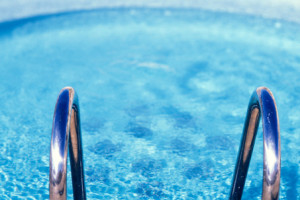By Amelia Harris
Staff Writer for Wake Up World
Pools are always attractive on those hot sunny days! You know those days I’m talking about; all you can imagine is throwing on your shorts or bathing suit and going out to the local pool to cool off on the hot summer day. And it’s no surprise…. water has always been a source of life and renewal on Earth.
But recently, water has become a major source of controversy, largely due to the amount of toxic crap that makes it into our tap water. Fluoride. Pesticides. Industrial pollution. The countless chemicals present in our water supplies today pose long term risks to our health; something science has known for decades. And although the community is waking up to the damaging effects of fluoride and other toxins, few people consider the effects of chlorine – a chemical that is added not just to our drinking water but to our swimming pools as well.
Chlorine and Swimming Pools
Do you think twice before you jump in a stream or river, but not before you jump into a chlorinated swimming pool?
[pro_ad_display_adzone id=”110028″]
Swimming is an excellent form of exercise. But like many activities, swimming in a pool has its downside. To maintain an artificial swimming pool takes a constant effort to disinfect them because the water is essentially stagnant, meaning it doesn’t move. When water is stagnant it becomes home to bacteria, algae, mosquitoes and other bugs, while water that is constantly moving remains fresh, oxygenated, and endlessly and more welcoming for swimmers. The most common way we keep our pools disinfected is with chlorine.
Despite our attempts to avoid disease by disinfecting our pools and tap water, an increasing body of research suggests that disinfectant agents like chlorine may pose their own health hazards.
Swimming in chlorinated pools, particularly indoor pools, has been shown to put kids at higher risk for developing respiratory illnesses, including asthma and hay fever. A 2004 study revealed that swimmers experienced breathing problems similar to those associated with asthma after several minutes of swimming in chlorinated water, even where chlorine levels were below the level recommended for disinfecting swimming pools.
According to researcher Arthur J. Williams, MD, of the Sport Science Institute of South Africa:
We’ve long suspected that chlorine has an adverse effect on the respiratory health of swimmers… Now we know the likelihood increases significantly with the concentration of chlorine used. Swimmers should be aware of the concentration of chlorine exposure they receive, and those who care for pools should closely monitor chlorine levels.
Let’s Test a Theory
After reading Dr. Williams’ statement I began to wonder….
Our lungs have small fibrous hairs called cilia. They help with removing toxins from the lungs so that the proper amount of oxygen is being absorbed into our blood. Similarly, a plant’s root system also has fibrous hairs which release hormones that attract fungi that live in the soil, and those fungi help to retrieve various minerals from the soil that help the plant to thrive.
So I did some experimenting, regrowing tomato plants from root cuttings using two different water samples; one using chlorinated drinking water, the other with water that had been treated with the Drops Of Balance water detox product. Over time, I found that the plants left in chlorinated tap-water produced smooth white roots, whereas the plant growing in detoxed water produced larger roots, with small fibrous hairs coming off them. The presence of root hairs on the non-chlorinated sample is a clear indication of a healthier, more effective root system.
While this was by no-means a peer reviewed double-blind study, the comparison is quite revealing. Roots devoid of fibrous hairs are unable to function to their full capacity, and it seems that breathing in chlorine vapour in swimming pools has a similar effect on the cilia in our respiratory system. The function of both mechanisms is to ensure adequate bodily nutrition (be it minerals from soil or oxygen from the air) and when that function is hampered, it results in deficiency — in plants, it manifests as mineral deficiency and in humans, oxygen deficiency.
This leads me to wonder, what is the consequence when chlorine is absorbed into the body through our skin?
Chlorine and Your Skin
Your skin is exceptionally absorbent. Anyone who has ever used a hand lotion or a nicotine patch can attest to that. In fact absorption is one of the skin’s main functions. Unfortunately it isn’t very selective; it will absorb pretty much anything it is exposed to…. and that includes chlorine.
According to the New York Department of Health:
Chlorine can damage the skin and cause premature signs of aging. Even small amounts of chlorine can be harmful over time. When you shower, heat opens your pores and allows the chlorine (from tap water) to seep into your skin. Chlorine strips the skin of its natural oils and causes it to dry and crack….
When chlorine enters the body as a result of breathing, swallowing, or skin contact, it reacts with water to produce acids. The acids are corrosive and damage cells in the body on contact.
Chlorine and Your Drinking Water
In a study published by PubMed entitled “Chlorination, chlorination by-products, and cancer: a meta-analysis”, researchers found “a positive association between consumption of chlorination by-products in drinking water and bladder and rectal cancer in humans”. Specifically, researchers found that those living in areas with highly-chlorinated water were 83 per cent more likely to develop a tumour than those in low-chlorine areas.
In addition there is evidence that adding disinfectants such as chlorine to water encourages other by-products to form through contact with organic materials. This contact happens during the water treatment process (ie. contact with dead leaves and other organic matter) and as chlorine comes into contact with human body fluids, cosmetics and sunscreens etc.
The International Agency for Research on Cancer (IARC) classifies some chlorination by-products as a “possible causes of cancer”. (Find out more about how cancer-causing substances are classified). And according to the Canadian Cancer Society, studies have shown that trihalomethanes (THMs) and haloacetic acids (HAAs), which are the most common chlorination by-products, can cause cancer in laboratory animals.
So this all begs the question….
Why is a chemical with so many health risks routinely added to our drinking and swimming water?
Have we seriously gotten to the point where we can be convinced that something extremely toxic is good for us, just because our questionable governments advocate it?
Where to Next?
This sounds rather alarming doesn’t it? Does it mean we should keep kids out of the pool? And what about our drinking water?
Of course, you have to make the best decision for yourself and for your family. Most studies concern people who are regularly exposed to chlorine, so a few visits to the wrong swimming pool are unlikely to cause long term health problems provided you minimize other forms of exposure.
There are several things you can do….
- To mitigate the problem at home, I use a shower head water filter which I bought locally from a plumbing supplies store. It attaches to my shower head, and removes most toxins (except fluoride unfortunately!) from my bath and shower water with no disruption to water pressure or flow.
- I also use the Drops Of Balance water purifying system which involves adding a natural solution of concentrated ionic sulfate minerals to water your drinking water. These minerals separate dissolved and invisible contaminants from the water solution, turning them visible and insoluble. The insoluble matter becomes heavier and sedimentary, which allow the contaminants to be easily filtered, or if ingested, to pass through your body through normal excretion.
- If you have an artificial swimming pool, you may like to consider converting your chlorinated pool to a saltwater pool. Most local pool suppliers are able to help you with this conversion, which eliminates the need to add chlorine and other chemicals to your swimming water to maintain it.
- For those who live close to the coast, next time you feel like a swim, head to the ocean instead of the local pool. Beside avoiding chlorine exposure, getting your feet in the sand is a great way to reconnect with nature and the natural salts are great for your health.
Until the community becomes better informed about its dangers, chlorine will no doubt remain in our drinking and swimming water – along with the countless other toxins that inexplicably turn up in our water supplies. But with knowledge and a bit of help, you can protect yourself and your family from the damaging effects of exposure.
Be well.
About the author:
Amelia Harris is a writer and eco-activist, interested in health and all things esoteric, with a passion for sharing good news and inspiring stories. She is a staff writer for Wake Up World.
[pro_ad_display_adzone id=”110027″]







